Compulite Releases V3.18R01 Vector Console Software Update
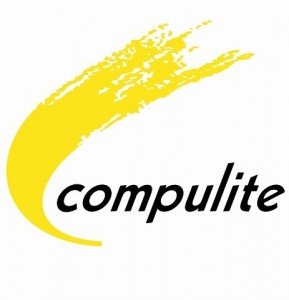 Compulite has announced a new software update for their series of Vector lighting consoles.
Compulite has announced a new software update for their series of Vector lighting consoles.
V3.18R01 adds a number of new features and enhancements to Vector consoles, including:
– A major GUI overhaul adding new and improved look and feel to the screen views
– New look buttons with the ability to design and set up soft keys with custom fonts, colors, patterns and sizes
– New dimmer operations of Single Dimmer Exam, Port swap and single dimmer display info on the command line
– A unique feature to enable 200% for the Grand Master
Over 200 device profiles have been added or updated. All Vector consoles now offer support for ACN protocol, DMX output via Ethernet.
Full release notes and the software download are available at Compulite’s website: www.compulite.com.
Fixture Tester App for iOS Devices Available in iTunes App Store
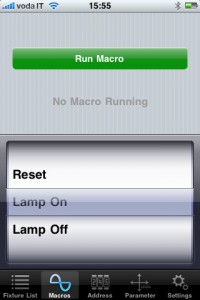
iOS app developer Bart van Stiphout has been a busy cat lately! First he releases the FocusRemote app and now the Fixture Tester App. The Fixture Tester iPhone OS is an application to test all the fixtures on the network in 4 steps:
1 Patch – Make a patch (or import a patch from ELC’s dmXLAN) and select all the fixtures you need to test, one type of fixture at a time.
2 Macro – Run a macro (For instance Lamp Strike)
3 Address Test – Press start. All the selected fixtures will go to their home position, one by one. In this way you easily can detect faulty dmx addresses. The correct address and universe is displayed for the current fixture and there are buttons present for pausing and stopping the test, as well as next and previous (when Paused).
4 Parameter Test – All selected fixtures go to their home position. When the test is started, all parameters will be run one by one to their maximum and back. The speed is adjustable. There are options to skip, adjust and repeat a parameter. The window shows the current tested parameter and its value. Again there is the possibility to pause or stop the test. An option “limit” can be set in de library to limit the maximum value for a parameter (Martin uses a combined shutter / control channel and you don’t want your fixture to reset while testing etc.).
Features:
- Unlimited number of fixtures
- Fixture Groups
- Shake to deselect all fixtures
- Warning if you are not connected to a WiFi network
- Includes an extended fixture library
- Available for iPhone, iPod Touch & iPad
- With the FileUploader App, dmXLAN patchfiles and custom fixture libraries can be downloaded in the iPhone/iPod Touch/iPad
- Testing is almost automatic
The Fixture Tester App is designed to work on both the iPhone/iPod Touch and the iPad natively. You can pick up a copy of the app through the iTunes App Store for $24.99 USD.
Enttec Announces Release of Datagate MK2

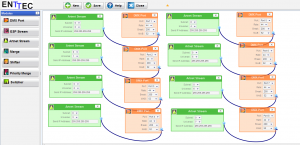 After more than two years in development, ENTTEC Pty Ltd has innovated its signature DMX networking tool, the Datagate, by adding a Web-based, user-friendly graphical interface, Gigabit-speed Jumbo Frames, Remote Device Management (RDM) on-demand, and more. The newly released Datagate Mk2 is the most powerful Ethernet-DMX node on the market!
After more than two years in development, ENTTEC Pty Ltd has innovated its signature DMX networking tool, the Datagate, by adding a Web-based, user-friendly graphical interface, Gigabit-speed Jumbo Frames, Remote Device Management (RDM) on-demand, and more. The newly released Datagate Mk2 is the most powerful Ethernet-DMX node on the market!
A key upgrade to the original Datagate is that the configuration is all performed via Web browser. A utility no longer needs to be downloaded to a computer. Instead, users set their browsers to the Datagate Mk2’s Web address, and there they will find a unique graphical interface that’s as easy to use as dragging and dropping. The simplified display screen allows users to create a flow chart easily and then the Datagate Mk2 will perform what is drawn. This enhancement not only eliminates steps, but makes the whole process easier to understand and manage.
Features Found in the Datagate MK2
- DMX Hub/Splitter
- DMX Merger (HTP or LTP)
- DMX -> Ethernet
- Ethernet-> DMX
- RDM Gateway
- RDM Sensor Info Gather / Report
- DMX shifting
- Simple Scene Playback or Test Frame Generation
- Hot Spare for another Datagate
For more information on the Datagate MK2 from Enttec, make sure to visit their website at www.enttec.com.
New iPhone/iPad App – FocusRemote Art-Net Contoller
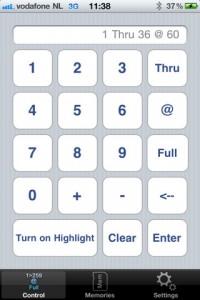
A new lighting app has hit the iTunes App Store, FocusRemote. Developed by Bart van Stiphout, the FocusRemote app is designed to do exactly as the name of the app says, focus lights remotely from our iOS devices.
FocusRemote uses the WiFi connection of your iOS device to connect to a wireless access point connected to your lighting network. The app send Art-Net signal via WiFi directly to your Art-Net capable system or to an Art-Net node that can input DMX signal into your rig.
FocusRemote has the ability to send a complete universe of Art-net over the network to bring address to a level for checking and focusing. Only one universe is selectable at a time, but you have the ability to select from all 255 Art-Net universes right in the app.
FocusRemote handles channel/address selection a little differently then some of the other Art-Net controller apps on the market as it uses a command line syntax which is typically found of lighting desk. The app also has the ability to record memories or cues for quick recall, but lacks the ability to execute on timing.
I have had a chance to play a little bit with the app and feel that there are some things missing like the cue timing, but you have to remember the name of the app FocusRemote. The app is designed to aid and help when focusing a plot and not run a show, that is what your lighting desk is for.
As for the price tag of $11.99, is it worth it, it really depends on your situation. If you are looking for a remote focus device that fits in your pocket and has the ability to work with any lighting network out there, then FocusRemote would be right up your alley. $11.99 is a small price to pay for a Remote Focus Unit that is universal and works on your iOS device that you probably already own.
You can download the RemoteFocus app from the iTunes App Store for $11.99.
[nggallery id=68]
ShowCAD PC Based Control Software – Artist 3
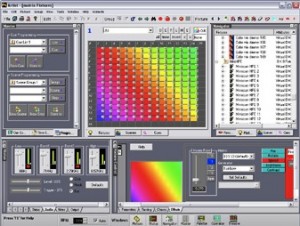 ShowCAD Artist 3 is a PC based lighting control program that offers powerful features behind a simple and understandable control surface. On top of being able to handle large amounts of DMX, the software can trigger and handle protocols used through the industry such as AV controls via RS232/422, MIDI, SMPTE/EBU, lasers, pyro and video.
ShowCAD Artist 3 is a PC based lighting control program that offers powerful features behind a simple and understandable control surface. On top of being able to handle large amounts of DMX, the software can trigger and handle protocols used through the industry such as AV controls via RS232/422, MIDI, SMPTE/EBU, lasers, pyro and video.
The software has a wide array use uses across different production types from theatrical playback, live busking to architectural controls and themed environments.
Here are just a couple of the features found in ShowCAD Artist 3:
- 64,000+ DMX output channels (128 universes) to control a potential 20,000+ RGB fixtures
- Full two dimensional matrixing across all DMX universes
- Fully variable colour pattern generators for a huge number of automated looks
- Real time video to DMX sampling from video files or live video input
- 64,000+ DMX output channels (128 universes) to control a potential 20,000+ RGB fixtures
- Full two dimensional matrixing across all DMX universes
- Fully variable colour pattern generators for a huge number of automated looks
- Real time video to DMX sampling from video files or live video input
The down side for me is that the Artist 3 software is currently only available on Windows machines. I have heard that ShowCAD is in the process of developing a Mac version of the software with no announcement date has been set.
You can download a 30 day trial of the software to give it a go and see what you think about it before you decide to spend the money. Visit ShowCAD’s website at www.showcad.com to learn more.
ETC Releases iRFR Preview iPhone/iPad App
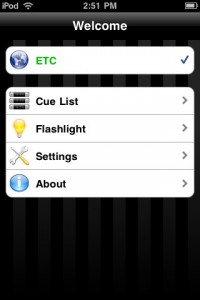 Check it out, ETC has a NEW iPhone/iPad/iPod Touch app, the iRFR Preview App! The Preview iRFR application for the Eos family of products – Eos, Ion and Element – provides a view-only Cue List display of the active cue list. Ideal for lighting designers and stage managers who need to only see current and pending cues, this application works on the iPhone, iPad Touch and iPad products. On the iPad, this application makes it possible for designers to take notes on cues, copy those notes to a text file and email them as needed.
Check it out, ETC has a NEW iPhone/iPad/iPod Touch app, the iRFR Preview App! The Preview iRFR application for the Eos family of products – Eos, Ion and Element – provides a view-only Cue List display of the active cue list. Ideal for lighting designers and stage managers who need to only see current and pending cues, this application works on the iPhone, iPad Touch and iPad products. On the iPad, this application makes it possible for designers to take notes on cues, copy those notes to a text file and email them as needed.
iRFR Preview Features:
- iRFR Preview is playback monitoring only – there are no console control features in the software.
- Follow the cue list – Preview will allow you to monitor the cue playback status live. You will see the cue number, the label, and the time remaining as the cue counts down. Follow the fade in real time.
- See the current cue, as well as 3 pending cues and 3 completed cues.
- Page up and down through the cue list. Single button touch to return to Live cue on stage.
- Navigate to any cue list using the [list][/][cue] syntax.
- Store console connection profiles, just like in regular iRFR and with the same credentials.
- On iPad, touch the cue and type notes. These are aggregated in a separate viewing area, and can be copied to the clipboard for easy pasting in word processors or email.
What are you waiting for… if own or operate an ETC Eos family console, head over to the iTunes App Store on your iOS device and download a copy of the iRFR Preview app FOR FREE! Also, you might want to check out the ETC WIKI page on how to setup an access point with your ETC console, as well as how to connect the iRFR app to the console.
[nggallery id=69]
Elation Announces Emulation Control Software for Mac, Windows & Linux
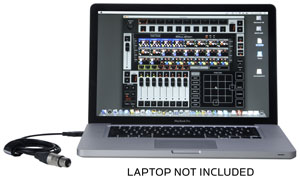 Elation Professional recently announced their latest control product, Emulation Control Software. Elation is making the case that the Emulation software is “User Friendly” claiming that the software is easy to use and you spend leas time learning the software and more time programing you lights.
Elation Professional recently announced their latest control product, Emulation Control Software. Elation is making the case that the Emulation software is “User Friendly” claiming that the software is easy to use and you spend leas time learning the software and more time programing you lights.
I am a huge fan of cross platform support being a Mac fan. Not only is the Emulation software available on Mac and Windows, but Linux as well!
Here are some of the features found in the Emulation Software:
- Multi-Platform
- DMX512A + Art-net
- Industry-Standard Cuelists
- MIDI Control Surfaces
- 100% Touch Screen Compatible
- 1500+ Personality Files
- iPHONE Riggers Remote
- Multi-language
- Clipboard & Undo
- Globals
- Forum
Learn more about the Elation Emulation Control Software by visiting their website at www.elationlighting.com.
Leprecon to Update LPC Console with Moving Light Controls
 Last year at LDI, Leprecon introduced the LPC series of lighting desk. This year, they are planning to make an announcement about the software update to the LPC series with moving lighting controls built in.
Last year at LDI, Leprecon introduced the LPC series of lighting desk. This year, they are planning to make an announcement about the software update to the LPC series with moving lighting controls built in.
The LPC is on the “low tech” end of the console spectrum with the ability to handle 2 universes of DMX and 512 control channels. From what I have heard and seen about the console, it is pretty flexible for it’s price point at just under $6,000 USD for the LPC-48V and $7,600 for the LPC-96V both provided with a touch screen.
The desk is designed for the HOW, community theatre, high school, middle school markets but are defiantly not limited to those. I have got to get behind the new software/desk and give it a test drive!
Learn more about the Leprecon LPC Series of console by visiting www.leprecon.com.
LSC Unveiled New Dimmer Range at PLASA 2010
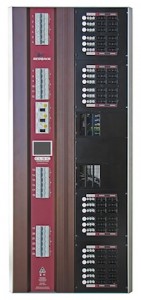 Australian based LSC Lighting Systems has previewed a new Redback Wall-Mount dimmer at the recent PLASA show in London.
Australian based LSC Lighting Systems has previewed a new Redback Wall-Mount dimmer at the recent PLASA show in London.
Taking only the Redback name and colour scheme, the sight of a crisp colour touch screen confirms the fact that this new dimmer has been redesigned from the ground up. The new Redback Wall-Mount sports a number of new features not commonly found in a dimmer in this price range including, optional relay channels, RDM, various output connector configurations, external wall plate control and a slimline case.
Available in 6, 12 or 24 channel models, the units cater for traditional dimming requirements as well a true switched power control module option providing direct power to control LED and intelligent lighting fixtures. The power control modules can be switched via DMX512, fixed in a permanent state (off or on) or controlled via a number of other methods in the same fashion that the dimming channels can be controlled. The switched power module outputs provide direct power by utilizing relays guaranteeing there is absolutely no electronics in the way to affect connected loads.
A number of different output socket combination’s are available as well as the hardwired version. A unique patch version using GST18 connectors permits double output sockets as well as a HotPower connection providing unseen flexibility in such a system.
The feature list includes:
- 6, 12 or 24 channel configurations;
- 10A per channel;
- Optional RCD or RCBO breakers;
- Optional Neutral Disconnect breakers;
- 3-phase or single phase operation;
- Slimline Design;
- Optional mixed Dimming and Relay modules;
- Full colour touch screen;
- RDM control and reporting;
- Optional Wall Plates;
- 6 internal scenes and chases;
- GST18 Outlet option with two dimmed outputs and one HotPowerTM output connector;
- Fire / Panic input.
For more information on the LSC Redback Dimmers, head over to their website at www.lsclighting.com.
Sunday YouTube Videos
Only one video this week and it is an AWESOME one. A good friend and fellow designer Alfonzo Torrealba, (@alfonzolighting) sent me this video. Is this really the future of DJ’ing? Why can’t we have something like this in lighting? I don’t care about being able to see through it, but multi-touch, come on, how can you go wrong with that? Then there is the ability to “design” your faceplate. Lay it out how you want it to work. Prefer more playbacks and executors, no problem, add as many as you like.
I need to stop right there, I could go on and on about this. Let’s just say I am super jealous! What do you think, how far away is something like this?
Love the PRG V676? You’ll Love it’s Little Brother, the V476

Pick your jaw off your desk and stop drooling… Well, atleast long enough to read about it. Then commence the drooling.
PRG will be debuting the new V476® control console which provides the same powerful, flexible control of the V676® control console in a smaller size hardware package with all the same programming capacities and capabilities. It is 2/3 the size of the V676 which allows it to be used in spaces that would prove too tight for the larger console. The V476 still offers programmers extraordinary speed, both in programming and responsiveness, as well as innovative interface advancements both in hardware layout and software design. V476 has intuitive features that quickly and easily handle the ever-expanding scope of equipment to be controlled while acknowledging the ever-decreasing time to program it all. It features three onboard touch screen monitors, one external touch screen and the external Channel Select panel. The encoder and fader counts remain the same between the two models as well as all capacities and capabilities. V476 provides a sophisticated and powerful software platform that is reliable and extremely user friendly. Expanding on performance tested development of programming and playback platforms to provide state of the art in control and functionality. Using an integrated Apple® Mac Mini as the processor unit means V476 takes advantage of superb graphics, faster processing, and can be efficiently updated. The V476 is optimized for an array of work environments with backlit buttons, low profile displays and off-axis viewing. V476’s cutting-edge software, sleek hardware, new graphical user interface and host of features make it the perfect control console for both lighting and media in a compact package.
Lumen Radio to Release CRMX Nova Flex Wireless DMX Device at PLASA 2010
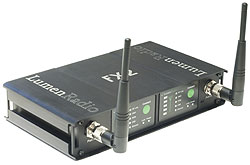 It is a real shame that Lumen Radio is no longer distributed in the United States due to a law suite that is currently underway. I had a brief time with the wireless DMX products from Lumen Radio and was pretty impressed with it. The ease of use, the design, the software, I loved it all. But that is all another story.
It is a real shame that Lumen Radio is no longer distributed in the United States due to a law suite that is currently underway. I had a brief time with the wireless DMX products from Lumen Radio and was pretty impressed with it. The ease of use, the design, the software, I loved it all. But that is all another story.
Next week at the PLASA Show in London England, Lumen Radio will be introducing their latest wireless DMX device, the CRMX Nova Flex and CRMX 2.4/5.8 GHz Cognitive dual band. The design of the CMRX Nova Flex is for the demanding lighting professional who wants one configurable wireless product that can handle any application and environment. The CMRX Nova Flex has the ability to support Ethernet protocols such as Streaming ACN, ETCNet, ShowNet and Art-Net.
LumenRadio is making CRMX 2.4/5.8 GHz Cognitive dual band available as an option across all CRMX product lines. While most users are satisfied with the standard single band 2.4 GHz CRMX Automated Cognitive Coexistence, Lumen Radio decided to add optional dual band operation for those applications that require exceptional performance and reliability. The option comes in the form of a module that at any time can be added to any new or existing CRMX product.
Learn more about Lumen Radio and their products by visiting their website at www.lumenradio.com.
LatestHeadlines
- Upgrading Your Toolbox: City Theatrical DMXcat-E and DMXcat Multi Function Test Tool
- Claypaky Bringing Back the Sexy to Par Cans with the Midi-B FX
- Ayrton Evolves the Cobra, the Cobra2 Developed for the US Market
- MA Lighting Intros grandMA3 onPC Fader Wing and DIN-Rail Nodes
- Live Events LEVL Up Fest: A Festival to Aid our Industry